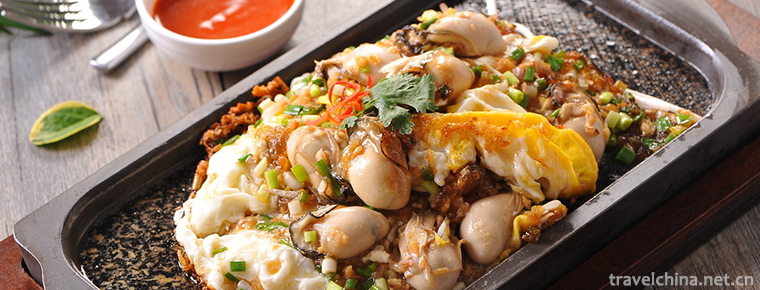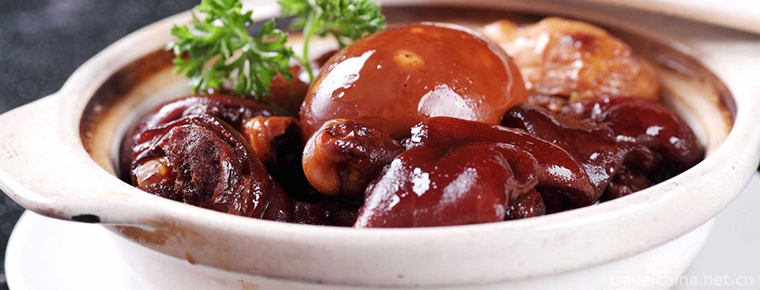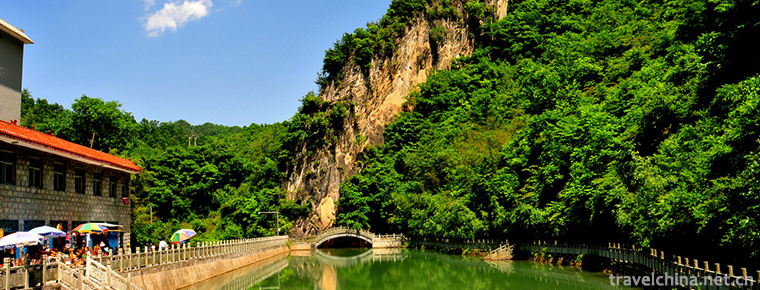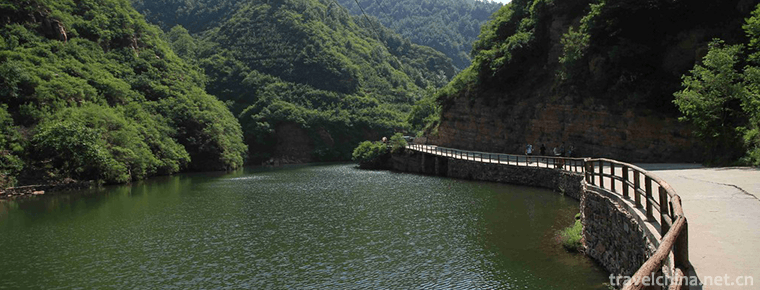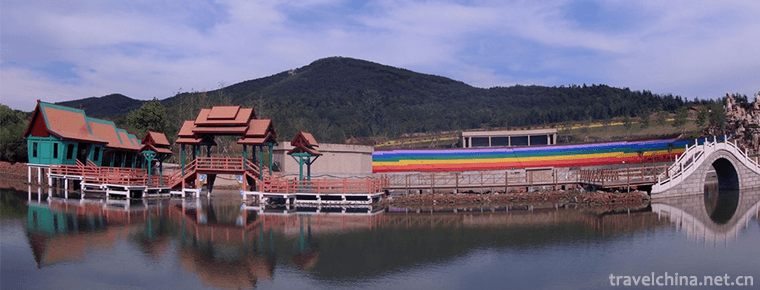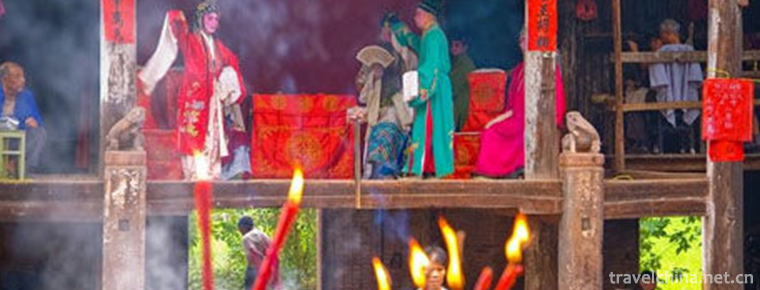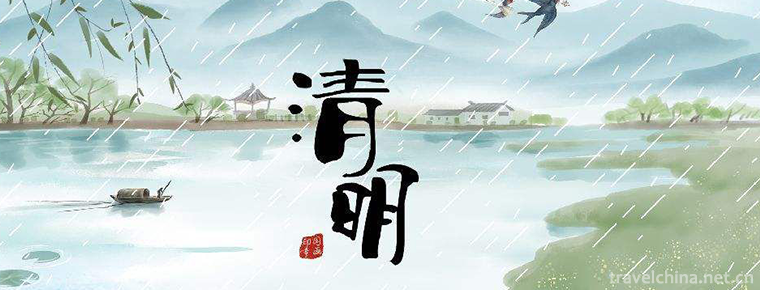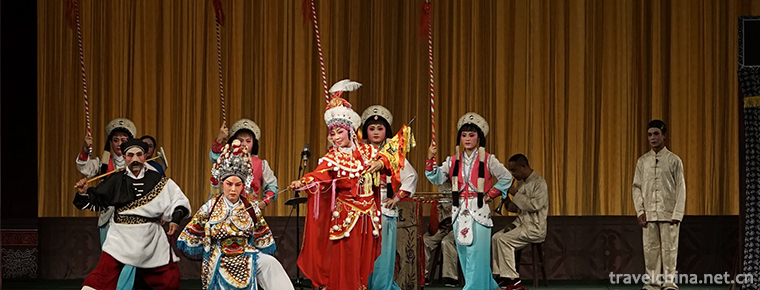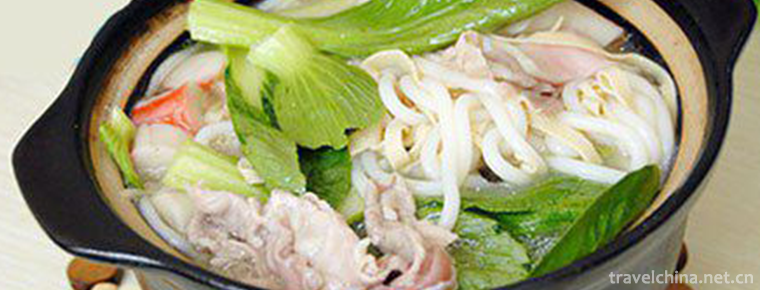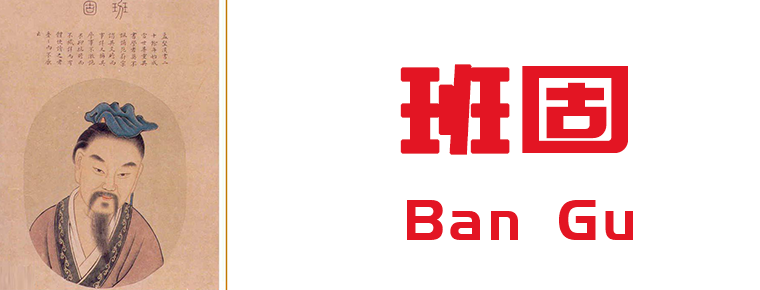Huangze Temple
Huangze Temple
Huangze Temple is the only sacrificial temple for Empress Wu Zetian in China. It is located on the West Jialing River in Guangyuan City, Sichuan Province. In 1961, it was announced by the State Council as the first batch of national key cultural relics protection units, and in 2006 it was rated as national AAAA-level tourist attractions.
Huangze Temple is not only the only Wuzetian Temple in China, but also contains six caves, 41 niches and 1203 statues of Huangze Temple and its inscriptions from the Northern Wei Dynasty to the Ming and Qing Dynasties. They are not only of great cultural value, but also of great ornamental and research value. They are also praised by experts as treasures of traditional Chinese culture.
geographical environment
Huangze Temple is located on the West Bank of Xijialing River and the east foot of Oolong Mountain in Guangyuan City, Sichuan Province, across the river from Guangyuan City.
History and Culture
Huangze Temple, originally known as Wunu Temple, was built in Kaiyuan, Tang Dynasty. It is said that it commemorates Li Bing and Erlang. During the reign of Zhenguan in Tang Dynasty, when Wu Zetian's father, Yi Ren, was governor of Lizhou, Empress Wu was born here. After the establishment of the Wuzhou regime, Shi Zhifen built the main temple of Sichuan, which had a scale at that time, and then renamed it "Huangze Temple" with the intention of "Huang En Hao Dao, Ze He intentionally". According to the Ming Dynasty "Huangze Temple Monument" written by Chen Hongen, "Huangze Temple is legendary created by Empress Wu", and the Qing Dynasty Zhang Bangzhan "Yun Treasure Journal" also said: "Empress Wu Bingzheng, the building of Huangze Temple here.
Others say that Wu Zetian died for God, and the people named her a temple "Huangze", hoping that her "Spirit of Heaven" would be catalogued by the township, so she was always worshipped in the temple.
In the 22nd year of Guangzheng in Houshu (959), the local government rebuilt and expanded the temple to form a new temple of Empress Wu of Tang Zetian. At that time, the temple of Huangze was built along the river, such as Zetianmen, Tianhou Shulou, Yuelou, Maitreya Buddhist Hall and Tieguanyin Hall.
Later, many buildings were destroyed and most of them were built in the Qing Dynasty. After 1300 years, the main buildings of Huangze Temple are gates, two holy halls, Zetian Hall, Buddha Tower, Lv Zu Pavilion, Wufo Pavilion, etc. The temple is based on cliffs, overlooking rivers, carving beams and painted buildings, with beautiful and magnificent momentum, and quite beautiful and lofty waters in Bashan and Shushu.
Every year on the 23rd day of the first lunar month, a grand temple fair will be held in Huangze Temple. Guangyuan people will go to the Oolongtan area in front of Huangze Temple for boat races and river cruises to commemorate the birthday of Empress Wu.
Major attractions
Summary of Scenic Spots
In Huangze Temple, there are gates, Zetian Temple, Second Holy Temple, Buddha Tower, Xiaonanhai, Lv Zuge Pavilion, Five Buddhist Pavilions, Wu's Family Temple, Bell and Drum Tower and other buildings. Queen's Villa and relief walls of Song Dynasty tombs are newly built.
Second Temple
Walking into the gate of Huangze Temple, the first thing you see is the Second Holy Temple. In the middle of the hall, there are two saints: Tang Gaozong and Wu Zetian.
Zhenguan 23 years (649), Tang Gaozong Li Zhi assumed the throne. When Li Zhi was the prince, he had an affair with Wu Zetian, a talented man of his father (Li Shimin, Taizong of Tang Dynasty). After taking office, he could not wait to establish Wu Zetian as queen, but was strongly opposed by a group of ministers. Li Ji (Xu Maogong) said, "Why do you ask outsiders more about your majesty's family?" Finally, in 655, he abolished the queen and changed to the Wu family. In the late years of Xianqing (656-661), Gaozong was blinded by the wind, unable to see, and difficult to control government. Empress Wu Zetian gradually mastered the government. They were called "two saints" both inside and outside the court. From then on, Wu Zetian became the ruler of real power, while Gao Zong was in the position of power falling aside. "After the first year of Linde (664), the emperor sat in the East and in the West for each court session, and the government was not big or small. All the powers under heaven were heard of. They belonged to the central palace, deposed the emperor, killed lives, and were decided by his mouth. The emperor of heaven was the arch of hands, which was called the"two saints"at home and abroad. This is a very rare phenomenon in Chinese history, fully demonstrating Wu Zetian's outstanding political talent.
On the left and right sides of the palace are nine famous ministers of Gaozong and Wuzhou dynasties, namely Li Ji, Li Yifu, Wei Yuanzhong, Li Zhaode, Di Renjie, Lou Shide, Zhang Cambodia, Lai Junchen and Shangguan Waner.
Temple of heaven
Behind the Second Temple is the Temple of Heaven. The temple was built in Tang Dynasty. It was once called "Real-looking Hall of Empress Wu" and "Heavenly Sacred Empress Hall" in history. Unlike ordinary "private" temples, the "official" temple built by the Queen's Royal Royal Royal Royal Royal Royal Court does not have "Daxiong Palace", so the Temple of Heaven is the main hall of the temple. Inside the palace, there are family maps of Wu family. Historically, Wu Zetian's father, Hu Yi, was a Taiyuan Wenshui man. He was originally a Shanxi timber merchant. He went to the army to meet Li Yuan (Tang Gaozu), and enjoyed official roads. In the three years of Wude (620), Wu Zetian was upgraded to Shangshu (equivalent to Minister of Construction). As one of the founding fathers of the Tang Dynasty, the warrior Yi had been deeply trusted by Tang Gaozu, and therefore became a prominent minister in the Tang Gaozu period. After eight years of Wude (625) in August, the warrior Yi was released as an official by Shi Wai, the governor of Yangzhou metropolitan government. Tang Gaozu had told him that he would only release for half a year. But soon after that, Li Shimin launched Xuanwumen soldiers and Li Yuan abdicated. All the key ministers in the dynasty were replaced by Li Shimin's close relatives. The warrior Yi was excluded and never returned to the court. In August of the ninth year of Wude (626), Li Shimin ascended the throne of emperor and changed the year to Zhenguan. The next year (627), the warrior Yi was transferred to the governor of Lizhou.
There are three opinions about the birth time of Wu Zetian. The first one is born in Wude seven years (624), the second one is Wude eight years (625), and the third one is Zhenguan two years (628). According to the first two statements, Wu Ze was born in Chang'an (now Xi'an, Shaanxi Province); according to the third statement, he was born in Guangyuan.
In any case, Wu Zetian spent her childhood and adolescence in Guangyuan. Her 12-year-old father died and her mother was abused by her brothers. In the eleventh year of Zhenguan (637), the 14-year-old Wu Zetian entered the palace and became a talented person of Taizong in the Tang Dynasty (Zheng Wupin). Taizong in the Tang Dynasty first loved her very much and named her Wu Mei Niang, but soon left her alone. Wu Zetian has been a talented person for 12 years, but his status has not been promoted. During the period of Taizong's serious illness, Wu Zetian and his son later established feelings with Gaozong Li Zhi. After Li Zhi succeeded, Wu Zetian became "queen" from "talented person" to "Zhaoyi". In 690 AD, Wu Zetian officially ascended the throne of "Emperor" and became the only female emperor in Chinese history, renamed Zhou. That year, Wu Zetian was a 67-year-old woman. In 705 AD, Zhongzong succeeded the Tang Dynasty. On November 26 of that year, Wu Zetian died, leaving a decree before his death: "Go to the emperor, call it the Empress of Heaven."
In the middle of the Temple of Heaven, there is a stone statue of the only "real face of Empress Wu" in China. The Song Dynasty's Jiuyu Zhi recorded that Wu Zetian was emperor's queen and "gave the temple its true appearance". The stone statue is 1.8 meters high and is carved from the whole sandstone. It has been more than 1300 years since then. The Tang Dynasty empress had a wide neck and a calm manner. She wore a Buddhist crown, a monk's and nun's robe, a plain silk shoulder, a collar around her neck, and her hands overlapped on her knees to make meditation seals in the Dharma circle. It is said that this is the image of Wu Zetian in his later years. Although it looks like a Buddhist costume, it is full of both human and god.
According to reports, the real image of the empress Wu was destroyed in 1949 and was pushed down from the ground before the incense case, separating her head and body. When it was restored in 1950, the neck of the stone statue was 1.5 centimeters shorter than the original one. In addition, the fading of the decorative paintings makes the clothes even more old-fashioned. Fortunately, in 1993, Mr. Gou Shousheng, a Thai Chinese, donated 800 grams of gold foil and changed his innocent appearance into a golden dress, which became more and more brilliant.
Inside the temple there is a stone portrait of Wu Zetian, inscribed with the Queen's head wearing a crown, wearing Royal clothes, clouds around the temples, dancing with neon clothes. It is the "golden wheel" portrait of the Ming Dynasty's Chen Hongen's "Wushuangzhuan", which is the attitude of Wu Zetian when he was the "king". An ancient poem praised him and said, "The most beautiful woman of all ages is the greatest hero in the world, and the crown of all nations is highly respected. Xumei had the privilege of being under Chen and Zaifu came to the cabinet. Six feet of orphans and catastrophes, Qianqiu Gao looked up to Fenggong; the remnants of mountains and rivers remained silhouette, still dumped City drunk Yanhong.
The Temple of Heaven also displays a Guangzheng Monument and a "Prince of Shengxian" monument. The monument is on the fourth day of February in the second year of the Holy calendar of Wuzhou (699). Wu Zetian went to Songshan from Luoyang to seal Chan, and stayed at the Prince Temple of Shengxian in Yanshi County when he returned. He wrote and personally wrote the monument when he touched the scenery. On the surface of the inscription, the story of Prince Zhou Ling's promotion to immortality is described, but in fact, it eulogizes the prosperity of Wuzhou. The writing style is graceful and smooth, and the mood is vertical and horizontal. The six characters of the stele "the stele of Prince Shengxian" are written in "flying white style" and the strokes are silky and white. There are 33 lines of inscriptions, 66 words in each line, which are close to the style of Zhang Cao. The context of the inscription and the Miscellaneous Poems and inscriptions of The Pilgrimage to Immortals in Beiyin were written by Xue Ji and Zhong Shaojing, famous calligraphers of the Tang Dynasty. Calligraphy enthusiasts of all dynasties regard the "Prince Sheng Xian Stele" as a treasure of calligraphy art.
In addition, the temple also displays Song Qingling's inscription for Huangze Temple in 1963: "Wu Zetian is the only empress in Chinese history, an outstanding female politician in the feudal era."
Wu family temple
On the north side of the gate of Huangze Temple, there are Fengge Pavilion and Bell Tower, and on the south side there are caves for writing the Heart Classic, Wu's Family Temple and Drum Tower. It is said that after the warriors came out of the capital governor of Lizhou, they "recruited rebellion, cared for the old and the weak, and were honest and honest officials with outstanding political achievements, which were well loved by the people. Therefore, a special temple was built to record the rebellion."
Inside Wu's temple, there are family portraits of Wu Zetian, in the middle of which is the warrior Yi and his wife Mrs. Yang. The warrior Yi's original match is Xiangli. He died in Wude for six years. In April of the seventh year of Wude, Tang Gaozu personally made matchmaker and married his stepwife, Yang Shi, daughter of the Sui Dynasty's imperial prime minister, and later became Mrs. Rong Guo. After the marriage of Yang and Yi, the warrior, Wu Zetian had three daughters. Wu Zetian was Yang's second daughter, so it is possible that Wu Zetian was born in 628. On the right are the two sons of the warrior Yi and his original counterpart Li Shi: Wu Yuanqing and Wu Yuanshuang. On the left is the three daughters of the warrior Yi and Mrs. Yang: Naming Shun, the eldest daughter, who married Facao Helan Yueshi, the king's mansion. He Lanmin was born to a woman who was widowed, and later to Mrs. Korea. She was lucky to be in the prohibition of entry and exit. After her death, she pursued Mrs. Zheng Guoshi. The second woman's name covenant, the word clear empty, that is, Zha ao, that is, Wu Zetian. Jinu's history books did not record her name, married Guo Xiaoshen, and died early.
Writing the Hole of the Heart Classic
The southeast part of Wu's family temple is the Drum Tower, while the northeast part is the hole for writing the Heart Sutra. In the early years of Tang Dynasty, Yan Zhenqing wrote a volume of Heart Classic, which was inscribed here. Therefore, it is commonly known as the hole of Heart Classic.
There are statues in the cave area of the Heart Sutra, which are distributed on three sides of the boulders, totaling 19 niches, and mainly carved on the east side of the boulders. The statues on the west side are buried in the earth all the year round. They were found in the course of capital construction in spring 2005. The main contents are the themes of Buddha III and Sakya and Dobao Buddha. The caves 12 and 13 on the south side are excavated by the parents of Wu Zetian, Yis and Yang's, which lasted for two years of Zhenguan. In 628, this time coincided with the third statement of Wu Zetian's birth. Therefore, the two caves may be opened for Wu Zetian's birth prayers. There are a group of ritual Buddha pictures of Wu's couple in the caves, which are very precious.
Tai Buddha house
The Great Buddha Tower is also called the Great Buddha Grottoes. It has no buildings at all. It is a statue grotto on the side of the Temple of Heaven. The building was first built in Daoguang period of Qing Dynasty, and later collapsed due to years of disrepair. The building we see is a new one built with the grant of the State Administration of Cultural Relics in 1980. The inscription of "Great Buddha Building" by Mr. Li Banli, a famous calligrapher, is on the upstairs, so it is commonly called "Great Buddha Building".
The Great Buddha Cave, 7 meters high, 6 meters wide and 3.6 meters deep, was excavated in the middle of the Tang Dynasty. The Lord Buddha Amitabha, standing on the lotus terrace, raised his chest with his left hand and fearlessly imprinted with his right hand, is strong and magnificent with solemn and solemn expression. Sighing at the disaster of the Cultural Revolution, his fingers were clearly broken and planted again. Let my generation regret.
The Lord Buddha served on the left and right of Gaye and the two disciples of Nuo. Kayeta has right shoulder, left hand holding incense burner, right hand holding fist sagging; A Nuo twists beads with left hand, right hand raising, thumb and middle finger side by side. Outside Guanyin, the general situation to the two Bodhisattvas, are also carved with beautiful eyebrows, dignified and benevolent. The statues of Left and Right Protectors, King Kong and Lishi, which have been eroded by the wind and rain, are hard to distinguish, but they are still heroic and outstanding in shape.
There is a statue of a "provider" carved in this grotto, which can no longer find the same face in the "Buddhist circle" of the whole country. Dressed in official clothes, wearing a Tang-style official cap with wings, he knelt before the Buddha and prayed devoutly. Under the foot of the Buddha, he looked humble and insignificant. According to Mr. Zhang Daqian's textual research, this "provider" should be Li Xian, who was abolished in the Tang Dynasty. He was praying for his mother because he wanted to revert to the emperor in order to please his mother. Another is Prince Li Xian of Zhang Huai. Because Li Xian had ordered Fan Ye to interpret The Book of the Later Han Dynasty, he was offended by Wu Zetian for insinuating that the imperial power was nearby, and was discarded as a common man. When Li Xian supervised the construction of the "Huangze Temple", he asked the stone workers to sculpt their statues at the foot of the Buddha to show their repentance and plead guilty.
Central pillar caves
The Central Pillar Cave (Cave 45), located on the left side of the Great Buddha Tower and above the Zetian Temple, is the earliest statue of Huangze Temple and the only central Pillar Cave in Sichuan.
Central Pillar Grottoes, also known as Tamiao Grottoes and Zhiti Grottoes, are 2.76 metres deep and 2.6 metres wide. The grottoes are about 13 cubic metres wide. The Grottoes have square planes, flat roofs and slightly arced roofs. The central cubic pillars of the grottoes pass directly to the top of the grottoes, and there are two niches in each of the three walls.
The central pillar is a complete stone pillar and a beautiful warp tower, which consists of three parts: the base, the body and the top. The first and second layers are chiseled with one niche on each side and three statues of one Buddha and two Bodhisattvas in the niche. The statues of these Buddhist shrines are simple and simple in carving. They are open from the front and hang down under the pedestal. They serve the Bodhisattvas on the left and right, with double buns, long skirts and long ground. The broad sky clothes are made in front of the chest and V-shaped across the shoulders to form two horns like wings.
In the three niches on the three stone walls, one Buddha, two disciples and two Bodhisattvas were created. The statues of Buddhas were all long and full of body, while the Bodhisattvas had a plump face and no prominence all over their body. The statues were strong and full of volume. Three walls are decorated with thousands of Buddhas. The central pillar grottoes were first excavated, but the statues in the three niches were altered for future generations.
Practical information
Ticket information
Ticket price: 50 yuan
Children under 1.1 meters are free of charge; elderly people over 70 years old hold old age or identity cards, active servicemen hold officer's cards, disabled persons hold disability certificates free of tickets.
Opening Hours
9:00-17:30
Traffic information
The bus routes of Guangyuan bus passing (stopping) Huangze Temple are: No. 1, No. 15 and sightseeing bus.
Related reports
"On the afternoon of March 20, the members of the national network media collecting group of beautiful Sichuan Shudao flower fragrance sighed heartfelt after visiting Huangze Temple. Huangze Temple is the only sacrificial temple for Empress Wu Zetian in China. It was built in the late Northern Wei Dynasty. After the continuous development of the Northern Zhou, Sui and early Tang Dynasty, it gradually became a scale and reached its peak in the prosperous Tang Dynasty.


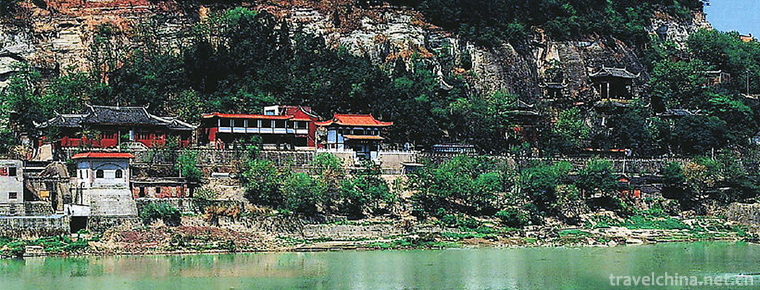
-
Oyster omelet
Oyster fry is a common home dish, which originated in Quanzhou, Fujian Province, and is one of the classic traditional snacks in southern Fujian, Taiwan, Chaoshan and other regions..
Views: 260 Time 2018-11-02 -
Jiang Cudan Canton style pig leg
Except for those with internal fever, dry stool and weak spleen and stomach function, breast enlargement products can be used as a warm-up tonic in winter..
Views: 234 Time 2018-11-02 -
Jinsi Gorge Scenic Area
Jinsi Gorge Scenic Area of Shangluo City, Shaanxi Province, is located in the hinterland of Xinkailing in the southeast of Shangnan County, Shangluo City..
Views: 111 Time 2018-12-12 -
Mingsha Mountain Crescent Spring Scenic Area
Mingsha Mountain Crescent Spring Scenic Spot is located 5 kilometers south of Dunhuang City, Gansu Province. It covers an area of 312,000 square kilometers.
Views: 80 Time 2018-12-12 -
Tianhe mountain
Tianhe Mountain, located in Xingtai City, Hebei Province, is China's Love Mountain, the hometown of Chinese Qixi Culture, and the birthplace of the legend of Cowherd and Weaver Girl.
Views: 183 Time 2019-02-21 -
Snow Mountain Rainbow Valley Scenic Area
Xueshan Rainbow Valley Scenic Area is located 3 kilometers east of Yishui County, Shandong Province. It mainly includes Snow Mountain, Dashan and Mashan, with a total area of 2 million square meters..
Views: 108 Time 2019-02-26 -
Bru
Bru, Mongolian means throwing. Competitions are divided into two categories: long throw and accurate throw, mostly held in festive festivals. The long throw is to decide .
Views: 457 Time 2019-04-04 -
Qiyang Opera
Qi Opera is one of the traditional local dramas in Hunan Province. It is also called Qiyang Band, Qiyang Opera in the early years of the Republic of China, and Qiyang Qidong Opera in the folk.
Views: 95 Time 2019-06-10 -
Qingming Festival
Qingming Festival, also known as Taqing Festival, Xingqing Festival, March Festival, ancestor worship festival, the festival period in mid-spring and late spring. Qingming Festival originated from anc.
Views: 146 Time 2019-06-11 -
Siping Opera
Siping Opera, also known as Sijuan Opera, Siping Opera, Sipeng Opera and Sipeng Opera, is popular in Pingnan County, Zhenghe County, Fujian Province. It is one of the national intangible cultural heri.
Views: 105 Time 2019-06-16 -
Yunnan Mengzi Crossing Bridge Rice noodles guo qiao mi xian
"Crossing bridge rice noodles" is a unique food in southern Yunnan. It originated in Mengzi City, Hani and Yi Autonomous Prefecture of Honghe. It has a history of more than 100 years. It wa.
Views: 224 Time 2019-07-16 -
Ban Gu
Ban Gu (32 - 92 years), Meng Jian, Fufeng An Ling (now Shaanxi Xianyang Northeast China, famous in Eastern Han Dynasty historian , Litterateur 。 Ban Gu's birth Confucianism Family, father Ban Bi Uncle.
Views: 259 Time 2019-09-06
